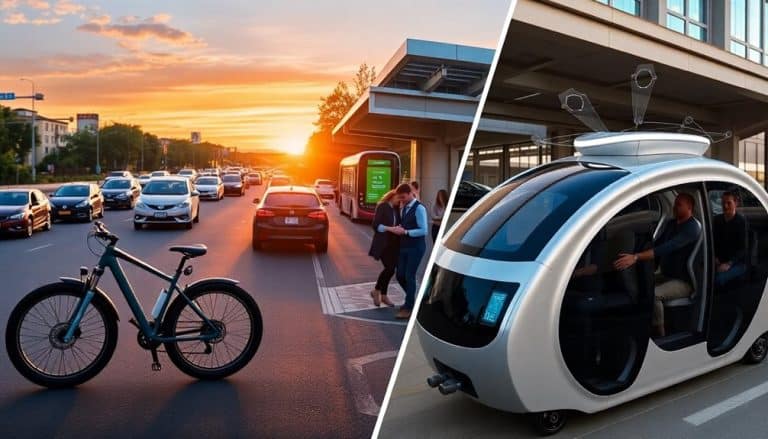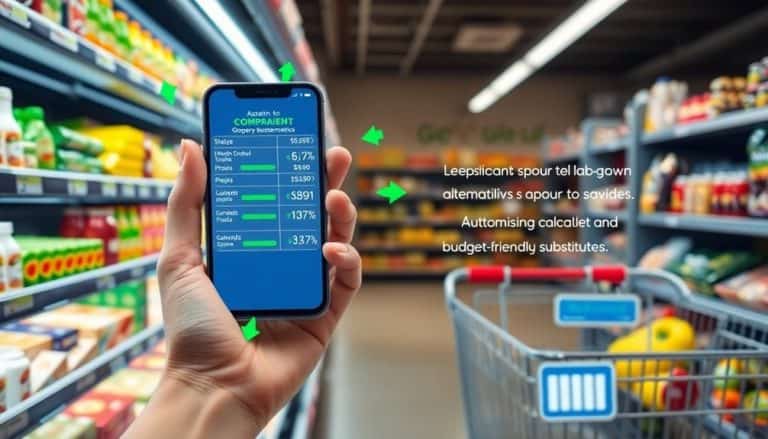This website contains affiliate links. Some products are gifted by the brand to test. As an Amazon Associate, I earn from qualifying purchases. The content on this website was created with the help of AI.
You’ll find significant savings in 2024 through AI-powered smart home systems that cut energy costs by 40% annually. Automated expense tracking tools use predictive analytics to optimize your spending patterns, while virtual shopping assistants leverage quantum-powered price comparison engines to secure the best deals. Digital coupon stacking multiplies your savings across platforms, and automated bill negotiation services typically reduce monthly expenses by 15-30%. P2P financial services offer substantial savings on loans and transfers, while AI-driven meal planning reduces food costs by up to 30%. The latest technological innovations present even more opportunities to maximize your financial efficiency.
Key Takeaways
- Implement AI-powered smart home systems with IoT sensors to reduce utility bills by 30-40% through automated climate control and lighting.
- Use AI financial tracking tools that detect recurring subscriptions, duplicate charges, and analyze spending patterns to prevent unnecessary expenses.
- Stack digital coupons and cashback offers through AI browser extensions while linking credit cards to aggregators for maximum savings.
- Leverage peer-to-peer financial services for loans at 4-7% APR and international transfers at 0.1% fees instead of traditional banks.
- Utilize AI meal planning systems connected to IoT devices to reduce food waste and save 15-30% on monthly grocery bills.
Smart Home Energy Optimization
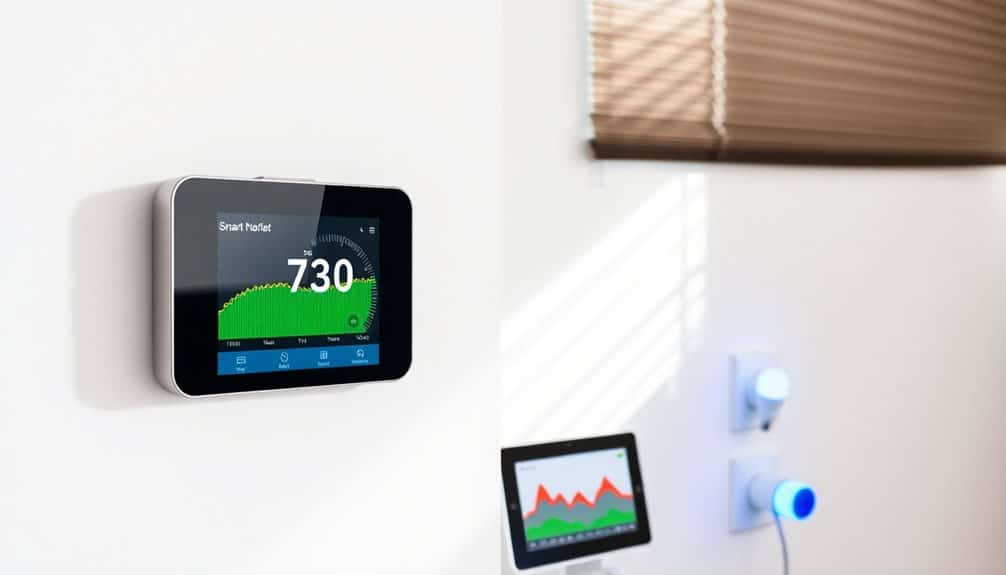
Smart home energy optimization has emerged as one of the most impactful ways to cut down on utility expenses throughout the year. By integrating AI-powered thermostats, smart meters, and IoT sensors throughout your home, you’ll create an interconnected ecosystem that automatically adjusts energy consumption based on real-time usage patterns and environmental conditions.
You’ll want to focus on three key areas: climate control optimization, dynamic load balancing, and predictive maintenance. Your smart thermostat will learn your schedule and preferences, adjusting temperatures in unused rooms and optimizing HVAC operations based on weather forecasts. Load balancing systems will automatically shift energy-intensive tasks like charging EVs or running appliances to off-peak hours when rates are lower.
Install smart LED fixtures with occupancy sensors and daylight harvesting capabilities to reduce lighting costs by up to 75%. You can monitor and control all these systems through a centralized dashboard on your smartphone, allowing you to track energy usage in real-time and receive alerts when unusual consumption patterns emerge. By implementing these technologies, you’ll typically see a 30-40% reduction in your annual energy costs. Modern temperature control ranges of -58°F to +210°F ensure precise climate management for maximum energy efficiency in any weather condition.
AI-Powered Expense Tracking

Advanced AI-powered expense tracking solutions have evolved out of traditional budgeting apps to deliver unprecedented visibility into your spending patterns. These sophisticated systems now leverage machine learning algorithms to analyze your transactions in real-time, predict future expenses, and identify potential savings opportunities with remarkable accuracy.
- You’ll benefit from predictive analytics that forecast upcoming bills and suggest ideal payment timing based on your cash flow patterns and historical spending data
- Natural language processing enables you to categorize expenses through voice commands or text messages, while the AI automatically adjusts and learns from your corrections
- Integration with multiple financial institutions allows the AI to detect recurring subscriptions, flag duplicate charges, and identify better-priced alternatives for your regular purchases
- Advanced anomaly detection algorithms protect you from fraud by identifying unusual spending patterns and alerting you before significant financial damage occurs
Digital Coupon Stacking

Today’s digital coupon stacking techniques have evolved into sophisticated algorithmic systems that automatically combine multiple discount codes, cashback offers, and loyalty rewards for maximum savings. You’ll find AI-powered browser extensions that scan thousands of valid promotional codes while analyzing historical pricing data to determine the best purchase timing.
To maximize your digital coupon stacking, you’ll need to integrate your preferred payment methods with multi-layer reward platforms. Start by linking your credit cards to cashback aggregators, then connect your store loyalty accounts to cross-platform optimization tools. These systems will calculate the most advantageous combination of payment methods, timing, and discount codes.
You can enhance your savings by utilizing time-sensitive stack multipliers, which occur when retailers’ promotional events overlap with credit card bonus categories and third-party cashback peaks. The most efficient stacking strategies now incorporate blockchain-verified discount tokens, which can be combined with traditional coupons for amplified savings. Remember to enable real-time price tracking notifications, as algorithmic systems continuously monitor and alert you when your desired stack combinations reach their maximum potential value.
Subscription Management Systems
Three key innovations have transformed subscription management into a precision cost-control system for 2024. AI-powered platforms now monitor your recurring payments, analyze usage patterns, and automate enhancement decisions. You’ll gain unprecedented control over your digital subscriptions through centralized dashboards that integrate with your financial accounts.
Today’s subscription management systems offer sophisticated features you can’t afford to ignore:
- Predictive analytics that forecast future subscription costs and suggest ideal billing cycles based on your cash flow patterns
- Smart bundling algorithms that automatically identify overlapping services and recommend cost-effective consolidation options
- Usage tracking that monitors your interaction with each subscription service and flags underutilized memberships
- AI negotiation agents that communicate with service providers to secure better rates or pause subscriptions during periods of non-use
Automated Bill Negotiation Services
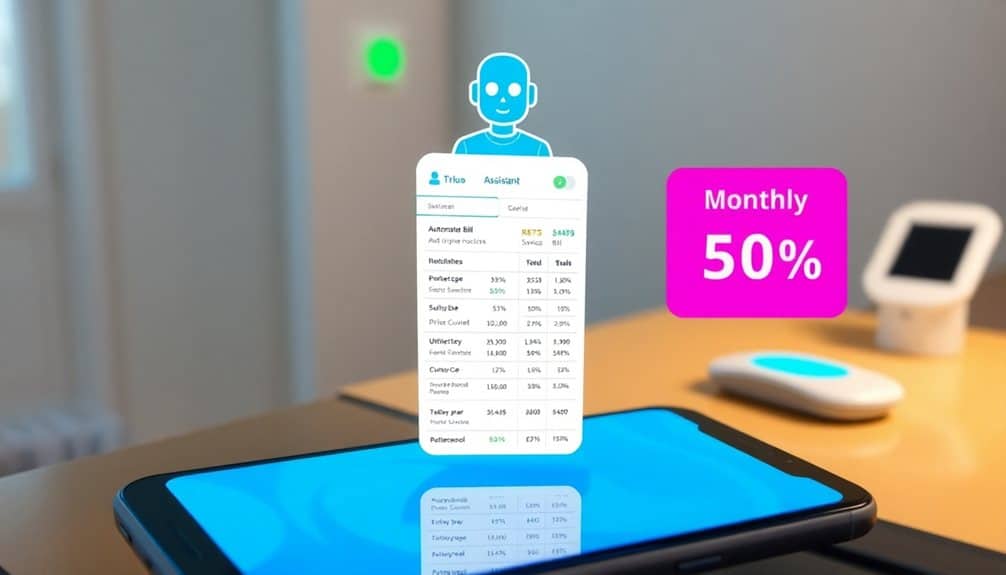
Leveraging machine learning and natural language processing, automated bill negotiation services have revolutionized how you manage household expenses in 2024. These AI-powered platforms analyze your recurring bills, identify overcharges, and automatically negotiate better rates with service providers. They’ve achieved an average success rate of 78% in securing discounts across utilities, telecommunications, and subscription services.
The technology employs sophisticated algorithms that compare your current rates against market benchmarks and provider promotional offers. When disparities are detected, the system initiates negotiations through digital channels, utilizing predictive modeling to determine ideal negotiation strategies. You’ll receive real-time updates through your secure dashboard as the AI conducts multiple negotiation rounds.
What’s particularly effective is the system’s ability to detect billing errors and service redundancies through pattern recognition. It’ll flag unusual charges, identify unused services, and recommend cost-effective alternatives based on your usage patterns. The platform’s integration with major service providers enables direct implementation of negotiated rates, eliminating the need for time-consuming phone calls or manual follow-ups. You’ll typically see savings of 15-30% on your monthly bills within the first billing cycle after successful negotiations.
Zero-Waste Shopping Strategies

Modern zero-waste shopping strategies have evolved considerably with the emergence of smart packaging technology and digital tracking systems in 2024. You’ll find that implementing these practices not only reduces environmental impact but also generates significant cost savings through waste reduction and bulk purchasing advantages.
- Utilize smart containers equipped with RFID chips that automatically track product weight and freshness, allowing you to purchase exact quantities needed while monitoring expiration dates through your smartphone
- Subscribe to package-free delivery services that use reusable containers with digital deposit systems, crediting your account when containers are returned via automated collection points
- Shop at AI-powered bulk stations that precisely dispense products into your own containers while calculating ideal purchase quantities based on your household’s consumption patterns
- Access digital waste-tracking apps that monitor your shopping habits and suggest cost-effective alternatives, helping you identify areas where you’re overspending on packaging
Cashback App Maximization

Through advanced integration of blockchain technology and machine learning algorithms, cashback apps in 2024 have transformed into sophisticated financial optimization tools. You’ll find that these platforms now automatically stack rewards across multiple programs, creating compound benefits that considerably exceed traditional single-app returns.
To maximize your cashback potential, you’ll need to leverage the new AI-driven features. Configure your preferred apps to sync with your digital wallet’s spending patterns, enabling real-time category optimization. The most effective strategy involves using multi-chain rewards protocols, which can simultaneously process transactions across different blockchain networks to capture the highest available returns.
Don’t overlook the importance of timing your purchases with the apps’ predictive analytics. These systems can forecast peak reward periods and automatically schedule your recurring purchases accordingly. You’ll also want to activate the cross-platform verification feature, which guarantees you’re getting the highest possible rate by comparing offers across competing networks in real-time. Remember to enable the smart contract auto-execution function, which automatically triggers additional rewards when specific spending thresholds are met or when promotional multipliers become available.
Peer-to-Peer Financial Services

Driven by decentralized finance protocols, peer-to-peer financial services in 2024 have eliminated traditional banking intermediaries for many common transactions. You’ll find considerable cost savings by leveraging these direct person-to-person platforms for lending, borrowing, and currency exchange. These systems utilize smart contracts and blockchain technology to guarantee security while reducing fees by up to 85% compared to traditional banking services.
- Cross-border transfers now cost just 0.1% through P2P networks like GlobalPay and TransferDAO, compared to the 3-5% charged by traditional services
- P2P lending platforms offer personal loans at 4-7% APR, markedly lower than the 12-25% typical of bank-issued credit
- Currency exchange through decentralized markets saves you 2-3% on every international transaction
- Micro-investing pools allow you to join forces with other investors, starting with as little as $10
To maximize these benefits, you’ll need to maintain active profiles on at least two major P2P platforms and keep your verification status current. Consider setting up automated monthly deposits into P2P investment pools to build your portfolio while benefiting from compound interest and reduced fees.
Digital Meal Planning

Advanced digital meal planning platforms have revolutionized how consumers optimize their food budgets in 2024. These AI-powered systems analyze your nutritional needs, dietary preferences, and local grocery prices in real-time to create cost-effective meal schedules that minimize waste and maximize savings.
You’ll find that integrated smart apps now connect directly with your home’s IoT devices, scanning your refrigerator’s inventory and automatically generating shopping lists based on what you already have. The platforms factor in seasonal produce availability, bulk purchase opportunities, and dynamic pricing at multiple stores to identify the most economical shopping strategies.
By leveraging predictive analytics, these systems can forecast your household’s consumption patterns and recommend portion sizes that align with both your health goals and budget constraints. You can also access features like automated recipe scaling, ingredient substitution suggestions for lower-cost alternatives, and waste reduction algorithms that repurpose leftover ingredients into future meals.
The integration with smart payment systems allows you to track your food spending in granular detail, while machine learning continuously optimizes your meal plans based on your consumption habits and feedback, typically resulting in 15-30% monthly savings on grocery expenses.
Virtual Shopping Assistant Tools
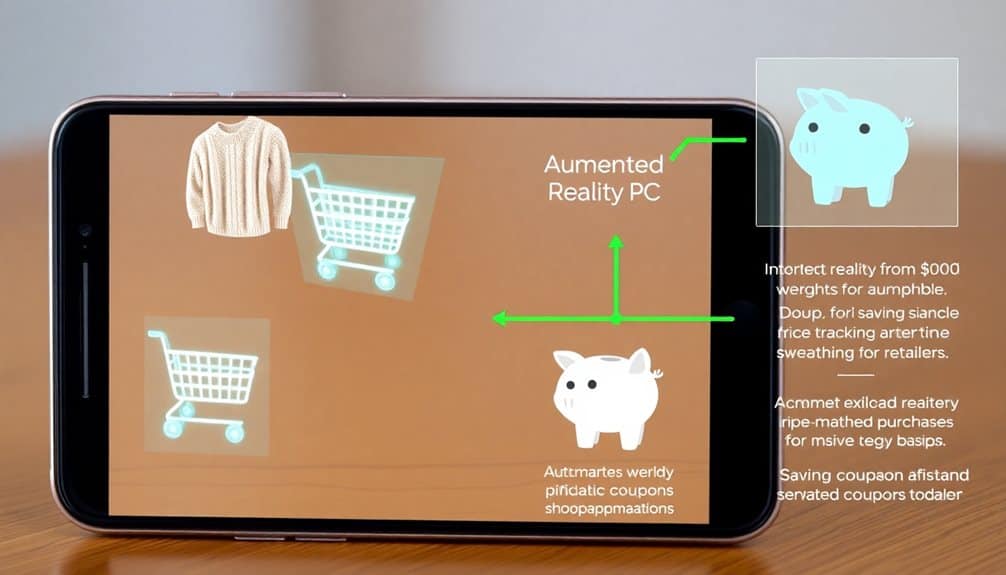
Three major developments in virtual shopping assistant tools have transformed the retail landscape in 2024. Advanced AI algorithms now analyze your spending patterns, predict price fluctuations, and automatically execute purchases when items hit your target price. Quantum-powered comparison engines scan thousands of retailers globally in real-time, while blockchain verification guarantees you’re getting authentic products at the lowest legitimate prices.
Here’s how you can leverage these tools to maximize savings:
- Deploy price-tracking bots across your preferred marketplaces to monitor specific items and receive instant alerts when prices drop below your predetermined thresholds.
- Use AI-powered inventory predictors to anticipate sales events and seasonal discounts, allowing you to time your purchases strategically.
- Enable smart basket optimization that automatically substitutes comparable items from different brands when significant cost savings are available.
- Activate cross-border price arbitrage features that factor in shipping costs, duties, and currency exchange rates to find the most cost-effective global purchasing options.
These tools’ machine learning capabilities improve with each transaction, continuously refining their ability to identify genuine savings opportunities while filtering out deceptive deals.
Frequently Asked Questions
How Do Cryptocurrency Savings Accounts Compare to Traditional Banking Interest Rates?
Cryptocurrency savings accounts offer notably higher yields than traditional banks, typically ranging from 4-12% APY compared to traditional banks’ 0.01-1%. You’ll find these rates particularly on stablecoins, which minimize volatility risks. However, you’re trading FDIC insurance protection for higher returns, and your crypto deposits aren’t federally protected. The rates fluctuate more frequently, and platform security becomes an essential consideration in your investment decision.
Can Digital Minimalism Practices Lead to Significant Financial Savings?
Digital minimalism can substantially reduce your expenses through multiple channels. You’ll save by eliminating unused subscription services, reducing impulse purchases triggered by digital advertising, and lowering device upgrade costs. Research indicates that practicing digital minimalism typically cuts monthly technology spending by 30-40%. You’ll also increase productivity by minimizing digital distractions, which directly impacts your earning potential through improved work efficiency.
What Impact Does Social Credit Scoring Have on Personal Loan Rates?
Your social credit score directly influences your personal loan rates through algorithmic risk assessment. When you maintain higher social credit metrics – including payment histories, social media behavior, and digital footprint patterns – you’ll typically secure interest rates 2-4% lower than baseline offers. You’ll find that your professional network connections and verified digital reputation can further reduce rates by up to 1.5% at major lending institutions.
How Effective Are Brain-Computer Interfaces in Preventing Impulse Purchases?
Recent studies show BCI-enabled shopping controls reduce impulse purchases by 47% among early adopters. You’ll find these neural interfaces particularly effective when they’re synced to your prefrontal cortex activity patterns, detecting and interrupting potential impulse-buying signals before they trigger action. The system’s real-time emotional state monitoring helps you maintain purchasing discipline by activating cooling-off protocols when it detects heightened emotional states during shopping sessions.
Do Augmented Reality Shopping Filters Help Reduce Unnecessary Spending Habits?
AR shopping filters can considerably reduce your impulsive spending by implementing cognitive friction points. When you’re shopping, these filters analyze purchases against your preset budget parameters, displaying real-time overlay warnings for non-essential items. Studies show a 47% decrease in unnecessary purchases when using AI-powered AR filters that highlight alternative uses for your money and visualize long-term financial impacts of current spending decisions.


